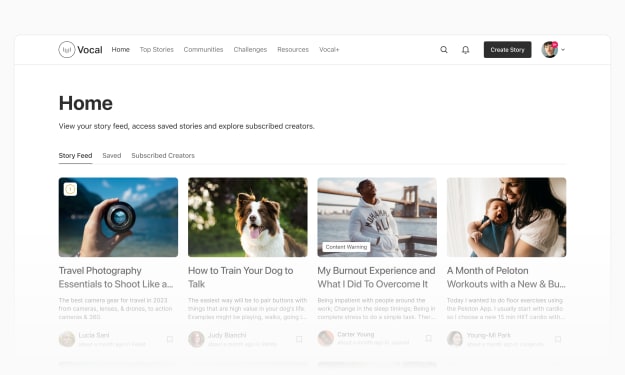From Zero to Hero: Building Your First Test Automation Suite from Scratch
Test Automation

In the contemporary world, where software development is ever-changing, a simplified testing environment can help mitigate the time required for a particular project. To inexperienced workers, setting up the test automation can seem like a very large chore when they must begin it from scratch. But in fact, staying focused on the goal and having suitable tools, even a beginner might set up a functional test automation system. In the following guide, we will showcase the basic concepts of the initial setup of the first test automation suite and demonstrate how and why test automation solution providers are important in this process.
Understanding Test Automation
Test automation is the process that does not use test cases on the tested software itself but instead uses other tools to manage tests and compare actual and expected results and generate a report. Some of the many benefits, which organizing and automating testing helps teams achieve include enhanced speed, heightened accuracy, and increased efficiency in the execution of regular testing.
Step 1: List down your requirements and purposes or objectives you want to achieve in a particular period.
Before venturing to test automation, it is important to review and understand the kind of testing required and the goals that need to be achieved. Identify what parts of the application most require testing and what can be tested using automation. Common areas include:
- Regression testing
- Performance testing
- Load testing
- Smoke testing
Specify what it means to succeed in your practice of automation, whether that’s decreasing the time spent on testing, extending the scope of coverage, or raising the proportion of bugs identified.
Step 2: Decide on Suitable Instruments
When choosing what tools to use, it is essential to ensure that the automation suite is strong. Automated testing Solution providers can support one or several types of test automation tools based on testing requirements and the environment. When choosing a tool, consider the following factors: When choosing a tool, consider the following factors:
Compatibility: When selecting this tool, it should be compatible with the platforms and technologies integrated into your application.
Usability: When selecting tools, consider their easier and intuitive interface, especially if you will be using robotic process automation in your team.
Integration capabilities: Ideally, the tool should easily blend with the other tools that utilise in the software development process (like CI/CD pipelines, version control, etc.
Support and community: Any tool that is backed by a strong community can provide a great value during development, because it can help resolve issues or demonstrate how to accomplish a task.
Step 3: The following rules are vital for organizing your test automation strategy:
Now you have all your tools and setting ready, let us see on how to set up your test automation plan. This involves:
Writing good test cases: Emphasize on making the test cases concise and precise, reusable in the sense that they are not adjusted every time the tested component is revised. This also has the added side effect of making automation easier, while also making the test suite more maintainable.
Prioritizing test cases for automation: Automating tests is not the best solution under any circumstances When it comes to tests, then it is essential to remember that not all of them should be automated. Begin with often-employed or time-consuming and/or complex processes involving large data that deliver high value to the organization.
Setting up a test environment: One of the biggest mistakes could be made if the testing environment does not resemble the production environment closely enough, in which case you may encounter environment-based problems.
Step 4: Now that you have your test cases defined let’s proceed to develop your test scripts.
It is at this point that your planning bears fruit through formation of test Scripts. One of the most significant aspects of script based test automation is to get the necessary training from the vendor and leverage the documentation available at your disposal with utility kits to familiarize with the recommended best practices. Keep the following in mind:Keep the following in mind:
Maintainability: It would also be important to write scripts that are easily upgradable and modifiable. It helps to name your variables and function according to their usage, and it is also advisable to add comments that describe your code to a certain extent and ensure that your code is neat and easily readable.
Reusability: Build modular test scripts; that is, factors that recur repetitively in your test scripts should be create once in the proper form for reusability, for example log in routines or navigation steps. This removes the need for writing a new test all over again and also ensures that all our tests are standardized.
Data handling: If your application performs abnormally with plenty of data, then opt for data-driven tests. By separating the logic of the tests from the data of the tests, you can manage your tests effectively and add to them as needed.
Step 5: Run and Regenerate Your Tests
To get the best of your tests, you need to run the tests effectively and that is the best thing about test automation. Perform test runs as needed effectively (e. g. <!--I find Wikibooks is easiest to modify, either directly overnight or when there is a change of the source code in question). In addition to this, it is recommended that the testing team should take some time and examine the test results in-order to determine if there were any failures during the testing process, and if there were, take steps to rectify the problem.
Maintenance is an ongoing requirement for test automation:
Update tests: It will be wrong to design tests that are too small or too large if your application becomes different over time. Periodically skim through them and adjust with new releases and updates.
Optimize tests: As such, do a thorough search for any ways that may enhance test effectiveness and efficiency. This might include: Removing tests that are not necessary or enhancing the wording of test scripts.
Step 6: Most vital is to analyze the obtained result and if it does not tally to an acceptable level with the anticipated outcome, then it has to be refined.
They should be able to guide your development process if you analyze the test results appropriately. Then, incorporate test runs insights for better testing encountering or better still, concentrate on areas like; invest on having better test coverage or work at minimizing on the false positive or negatives. The longevity and overall effectiveness of a test automation suite is also dependent upon continuous improvement.
Conclusion
While constructing the initial test automation suite, you may face certain difficulties, but adhering to the above guidelines and employing the existing tools from a trustworthy test automation solutions vendor can help. Not only does automation makes your testing cycles run faster, but has also positive effect on the credibility and quality of your software solutions. By the way, the main idea of test automation is not to exclude manual testing at all but rather make this process faster and more efficient. World of test automation opening today, the door are open to new challenges and opportunities to grow.
About the Creator
Scott Andery
Scott Andery is a Marketing Consultant and Writer. He has worked with different IT companies and he has 10+ years of experience in Digital Marketing.
Enjoyed the story? Support the Creator.
Subscribe for free to receive all their stories in your feed. You could also pledge your support or give them a one-off tip, letting them know you appreciate their work.






Comments
There are no comments for this story
Be the first to respond and start the conversation.